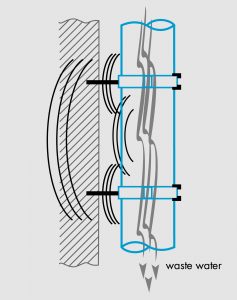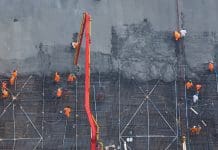Minimising noise from building services such as heating, ventilation and wastewater drainage is key to helping produce a pleasant environment for the occupants as well as for neighbouring properties
This is particularly important in multi-occupancy buildings, from apartments and hotels to hospitals and offices.
The traditional approach in the Building Regulations, of wrapping soil pipes with mineral wool subsequent to installation, will not be sufficient to comply with the stretching targets for noise reduction sought by designers (and expected by users) of modern multi-occupancy buildings.
Air-borne noise is generated by wastewater flowing through pipes. Structure-borne noise is created where pipes are in contact with the building structure, either deliberately through supporting clips and brackets, or inadvertently, due to pipes resting on the structure, and sound waves pass from pipes to building. Both sources of noise can be managed by good system design, product choice and correct installation.
Plastic acoustic soil and waste pipes can thereby be used as part of the successful management of sound transmission in buildings.

Franz Huelle of the BPF Pipes Group commented: “There are currently no UK, European or sector standards in existence that specify the acoustic performance of soil and waste pipes, and yet designers are constantly seeking to reduce noise in modern buildings. Acoustic measurement is a complex subject and acceptable levels of noise inside buildings are intensely personal. Our guide will help specifiers identify the right information.”
Sound-attenuated plastic pipes, together with purpose-designed ancillaries such as flexible and vibration-resistant joints, support clips and fire collars, provide a more modern approach to the design of soil and waste systems, meeting increasingly stringent expectations.
The new guidance provides clear advice on what technologies are available, what to choose to support overall acoustic building design, what to look for in product specification to ensure the best results, top tips on good installation practice, and a guide to understanding the terms relating to acoustics in buildings.
As Franz Huelle concludes: “Combining the traditional benefits of weight and quick jointing with state-of-the-art design and manufacturing in a complete soil and waste systems solution with added acoustic performance is ideal to help those designing building services to meet and exceed modern expectations.”
For more information on BPF services see here.













